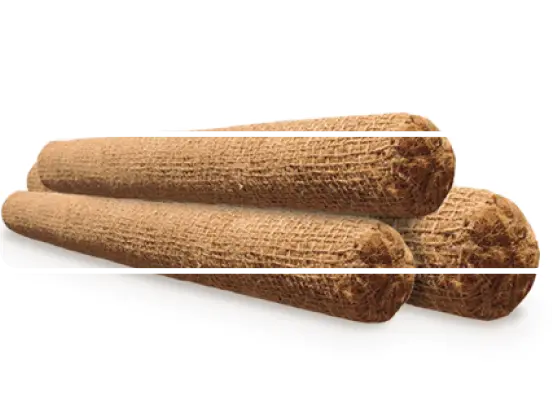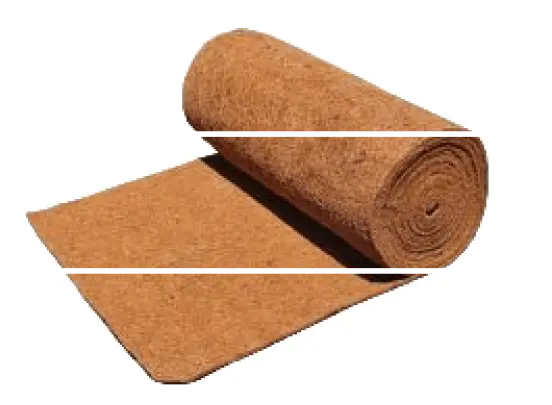World accepted Coirmedia. Begin your journey for better growth.

Coco coir bricks are compressed blocks of coconut husk fibers gaining popularity in the gardening world. These eco-friendly alternatives to traditional potting soil or mixes offer a plethora of benefits for both indoor and outdoor plant enthusiasts. Coco coir is naturally resistant to mold and mildew, boasts excellent drainage and aeration, and holds moisture exceptionally well. Additionally, coco coir bricks are lightweight, compact, and easy to store, making them ideal for space-saving storage and convenient transportation. Before diving into the exciting world of using coco coir bricks, let’s explore how to prepare them for use in four simple steps.
How to Use Coconut Coir Bricks? Follow these 4 Easy Steps
Preparing how to use coco coir bricks involves a straightforward process. Here’s a detailed breakdown:
The first step involves selecting a container large enough to accommodate the coco coir brick after it expands. Since the brick will significantly increase in size after rehydration, choose a container like coir grow bag or open top bag, at least three to four times larger than the brick itself. This allows for proper expansion and avoids potential overflow. Sturdy buckets, tubs, or even wheelbarrows can be suitable options depending on the size of the brick.
Once you have a suitable container, gently place the coco coir brick inside. Now comes the rehydration process! Fill the container with warm water, ensuring the brick is completely submerged. Warm water aids in faster and more even rehydration compared to cold water. The amount of water needed will vary depending on the size of the brick. Generally, a good rule of thumb is to use four to five parts water for every one part coco coir brick (by volume).
After allowing to soak for at least 15-30 minutes, it’s time to break it up. Using your hands (gloves are recommended), gently break apart the softened coir fibers. This helps ensure even hydration and creates a loose, fluffy texture ideal for potting mixes or planting directly in. If any stubborn clumps remain, use a garden fork or rake to further loosen them.
The rehydrated coco coir is now ready for use! Depending on your needs, you can use the coco coir directly or amend it with other potting mix ingredients like perlite or compost for additional aeration and nutrients.
What about leftover coco coir? Don’t worry! Coco coir is a valuable and long-lasting growing medium. Simply store any unused, rehydrated coco coir in a sealed plastic bag or container to prevent it from drying out. Properly stored, rehydrated coco coir can last for several years, making it a cost-effective and sustainable choice for your gardening needs.
Rehydrating coco coir bricks is a simple yet important process on how to use coco coir bricks. As mentioned earlier, all you need is a large container, warm water, and a bit of patience. The key is to ensure the brick is completely submerged in water and allow it to soak for a sufficient amount of time for optimal expansion.
Step-by-Step Process: Rehydrating Coco Coir Bricks
Coco coir bricks offer incredible versatility for various gardening applications. Here’s a brief overview:
Hydroponic Growing with Coco Coir Bricks:
Coco coir’s exceptional drainage and aeration properties make it a popular choice for hydroponic systems. Rehydrated coco coir provides excellent support for plant roots while allowing for efficient nutrient delivery.
Container Gardening and Organic Growing with Coco Coir Bricks:
Coco coir bricks are ideal for creating lightweight and well-draining potting mixes for container gardening. They are also a favorite among organic gardeners due to their natural and sustainable properties. Where to buy coco coir bricks is a common question. Reach out the leading coir product manufacturers such ass Coirmedia, look for them at your local gardening stores or online retailers specializing in gardening supplies.
Coco coir bricks can be a valuable addition to your composting efforts. Its excellent aeration and water retention properties create an ideal environment for beneficial microorganisms to thrive. Here’s how to utilize coco coir bricks in your compost bin:
Turning the compost: As with any compost pile, turning it regularly is crucial for proper decomposition. Turning aerates the compost and helps break down materials evenly.
Coco coir bricks are a versatile and eco-friendly addition to any gardener’s toolkit. Their ease of use, sustainability, and wide range of applications make them a valuable resource for both indoor and outdoor plant enthusiasts. Whether you’re looking for a well-draining potting mix, a growing medium for hydroponics, or an amendment for your compost bin, it offer a multitude of benefits. With a little preparation and understanding of how to use coco coir bricks, you can unlock their potential and create a thriving environment for your plants and enrich your compost for a flourishing garden.

Mathew is a product designer and engineer at Coirmedia, where he combines his passion for sustainability with his design and engineering expertise. He develops innovative coir products that are not only functional but also eco-friendly. Driven by a desire to share his knowledge, Neil is passionate about writing and teaching, aiming to educate others about his ideas, innovations, and the technology behind them.






World accepted Coirmedia. Begin your journey for better growth.




